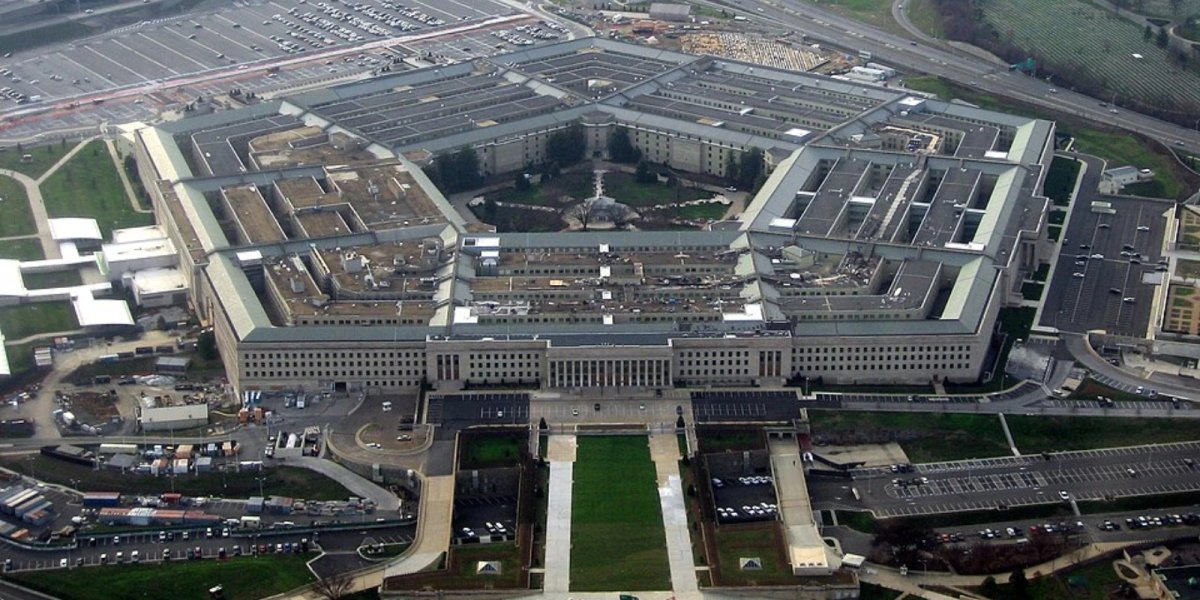PENTAGON'S NEW DEFENSE STRATEGY: FOCUS ON HOMELAND SECURITY

The Pentagon is currently developing a new National Defense Strategy (NDS) that will refocus its priorities on the US homeland and the Western Hemisphere. This draft strategy, which reached Defense Secretary Pete Hegseth’s office in September 2025, marks a significant departure from previous administrations by de-emphasizing the great-power competition with China and Russia.
If this “new” strategy sounds familiar to US history buffs, then it should. Under what one might call the nation’s very first NDS, the fifth President of the US, James Monroe, developed a doctrine that would, 27 years after he first penned it, bear his name. It became known as the Monroe Doctrine, and its primary focus was to keep the Europeans out of the New World. If they didn’t stay away, then they would be met by American force.
This time around, the shift in the Pentagon’s strategy is meant to keep growing Chinese and Russian influence out of the Western Hemisphere. The threat of force remains the same.
Monroe Doctrine: Historical Context and Impact
In 1823, less than 20 years after the Treaty of Ghent effectively laid the groundwork for ending the War of 1812, President Monroe first articulated what later became known as the Monroe Doctrine.
One of the reasons that the USA declared war on Great Britain to kick off the War of 1812, sometimes called the Second War of American Independence, was to prevent Great Britain from meddling in American affairs, including the new nation’s expansion plans.

The US’s wartime success, albeit not an outright victory, led future US leaders, particularly Monroe, to develop a strategic vision that asserted the New World and the Old World were to remain distinctly separate spheres of influence.
Monroe saw further efforts by European powers to control or influence sovereign states in the region, initially just North America, to be viewed as a threat to US security. Future US leaders expanded this vision to the entire Western Hemisphere and used it as a rationale to embark on military operations primarily in Latin America.
Roosevelt Corollary: Extension of Monroe Doctrine
Before becoming president, Theodore Roosevelt had proclaimed the rationale of the Monroe Doctrine in supporting intervention in the Spanish colony of Cuba in 1898. The Venezuela crisis of 1902–1903 showed the world that the U.S. was willing to use its naval strength to intervene to stabilize the economic affairs of small states in the Caribbean and Central America. These events were key in the development of the Roosevelt Corollary.
In 1904, President Roosevelt introduced his Corollary to the Monroe Doctrine, asserting the right of the United States to intervene in Latin American nations guilty of "flagrant and chronic wrongdoing." This reinterpretation aimed to preempt intervention by European creditors, but it also became a means for the US to forcefully secure economic benefits when Latin American nations defaulted on debts to European and American banks and businesses.
This "Big Stick ideology," frequently associated with Theodore Roosevelt's famous advice to "speak softly and carry a big stick," sparked considerable anger throughout Latin America due to the Roosevelt Corollary.
The Roosevelt Corollary to the Monroe Doctrine, interpreted by some historians as the start of the "American Liberal Empire's" second phase, is thus seen as a foreign policy rooted in military dominance. Critics suggest it established US hegemony in the region, effectively positioning the US as a "hemispheric policeman."
2023 National Defense Strategy: Key Elements
The Monroe Doctrine has served as a cornerstone of US grand strategy that has evolved significantly over the two centuries since Monroe first articulated it.
Today, it remains relevant in policy discussions, particularly regarding how the US responds to new challenges to its regional dominance from powers like China and Russia. The new NDS clearly promises to stay true to Monroe and Roosevelt’s vision regarding the US role in “securing” the Western Hemisphere.
According to sources who have seen the draft, the new NDS includes the following key details regarding the strategy shift.
- Prioritizing the homeland. The draft NDS prioritizes the defense of the US homeland and the projection of power across the Western Hemisphere over addressing more distant threats.
- De-emphasizing China and Russia. The Pentagon's updated security strategy reportedly demotes Beijing and Moscow from their previous top-priority status, shifting focus instead to the homeland and Western Hemisphere. While this marks a change from the prior emphasis on great-power competition, some officials indicate that countering Chinese influence in Latin America will remain a significant concern.
- Supporting the "America First" agenda. This strategic realignment supports President Donald Trump's "America First" policy by prioritizing domestic issues and border security. Reports indicate that a January 2025 executive order directed US Northern Command to secure US borders and counter "forms of invasion," such as illegal migration and narcotics trafficking.
- Focusing on domestic and regional missions. This strategic shift is already reflected in various military operations. For instance, the National Guard has been mobilized to support civilian efforts, and there's an increased military presence in the Caribbean to combat drug trafficking. Recently, the US attacked a fourth vessel off the coast of Venezuela that it claimed was carrying illegal narcotics to the US.
- Potential impacts on allies. A draft strategy suggests that a shift in focus from global rivalries might lead allies to doubt US commitments in Asia and other regions. This pivot could affect allies who depend on the U.S. to maintain its strong stance globally.

China's Role in 2023 U.S. Defense Strategy
A DoD official told Military Times this week that the new NDS will not be a complete shift away from China. Instead, the official said the Pentagon can use this hyperfocus on the Western Hemisphere to better counter Chinese malign activity in Latin America, a region often thought of as “America’s backyard.”
“For too long, China, Russia, and Iran have been active in Latin America, and Washington’s response has often been somewhere between nonexistent and ineffective,” said Bradley Bowman, senior director of the Center on Military and Political Power at the Foundation for Defense of Democracies.
However, analysts, including Bowman, caution that if the US only brings a “military hammer” to a region that needs interagency and public-private sector support for its economic challenges, the US “will lose the competition with China in Latin America and waste a lot of money and military resources.”
Bowman also warned that defending US vital interests in the Pacific, Europe, and the Middle East while adopting a more robust US military posture in Latin America could quickly exacerbate existing shortfalls in military capacity.
“If we take on additional military commitments and requirements and don’t provide the Pentagon commensurate additional resources, readiness will erode. We have seen that movie before, and it is not a good one,” Bowman said.
As part of the new strategy, the department will continue to focus more on drug cartels, including cartels that are tied to China, according to another US official. The official added that China has drastically increased its footprint in Latin America, particularly around the Panama Canal, a critical trade route for both Washington and Beijing.
“So the strategy is still very keyed in on defending against China,” the official stressed.
Suggested reads:
National Security Analyst
George Riebling
Air Force Veteran
George Riebling is a retired USAF Colonel with 26 years of distinguished service as an Air Battle Manager, including operational assignments across fi...
Credentials
- Retired USAF Colonel, 26 Years Service
- Former NATO Senior Executive (10 years)
- Boeing Strategy and Business Development (2 years)
- Operational experience across 5 Command and Control weapon systems
Expertise
SHARE:



